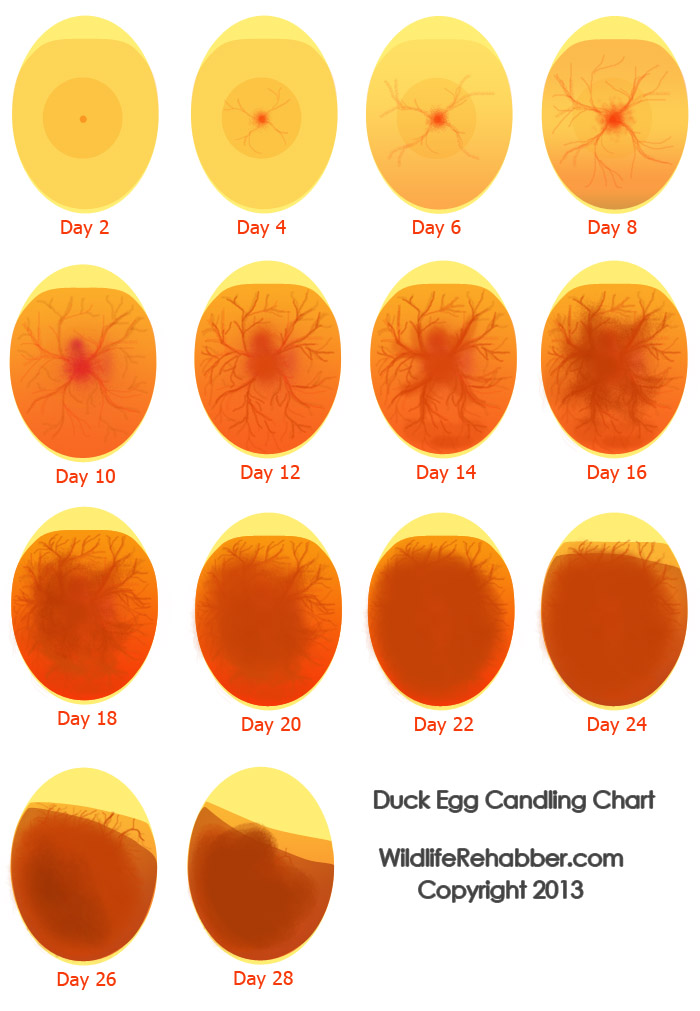Candling Eggs
Before Candling Eggs…
The information on this page is made available specifically for determining the stage of egg development in duck or goose eggs for the purpose of determining whether to intervene if it is suspected that the adult is no longer returning (to see if the eggs should be taken to a permitted wildlife rehabilitator) OR for pre-authorized humane population management. Otherwise, it is against the law to disturb the nest or eggs of any migratory bird. For additional information, please visit the Duck Egg and Nest Information page.
If a wildlife rehabilitator or other wildlife professional is not available to candle the eggs for you, use the following chart to determine the stage of embryo development. If you are inexperienced in candling eggs, you should practice with a store bought egg first. Please remember that eggs are fragile. You should also thoroughly wash your hands after handling eggs.
Why Candle Eggs?
Candling eggs is a way to determine the development of a fertilized, incubated egg or whether an egg has not yet been incubated or might be infertile. This information is especially useful for humane waterfowl management programs because it ensures that incubation has not begun and that no live embryo is inside the egg when the egg is oiled or addled.
Visit our article about incubators for more information about the types available for purchase, including DIY homemade incubators.
How To Candle Eggs
Candling eggs is acheived by directing a strong beam of light into the eggs. This will illuminate the inside of the egg enough to distinguish whether it is fertilized, and if so, what the development stage of the might be. You can actually use a standard flashlight and a empty cardboard toilet paper roll (which will focus the beam). But some eggs have thicker shells, or maybe speckled or dark, making it difficult to candle. Egg candlers available for purchase are developed to candle even difficult eggs. Al link to a few of those is provided below.
Why Candle Eggs? Candling eggs is a way to determine the development of a fertilized, incubated egg or whether an egg has not yet been incubated or might be infertile. This information is especially useful for humane waterfowl management programs because it ensures that incubation has not begun and that no live embryo is inside the egg when the egg is oiled or addled.
Stages Of Development
This chart is based on mallard egg development in the 28 days prior to hatching. On average, songbird eggs hatch in 14 days. To apply the stages of development of this chart to songbirds, each image equals each day of development. That tiny speck you see in the center of the yolk on Day 2 of development is called the “Germ Spot”. It means the egg has been fertilized.






